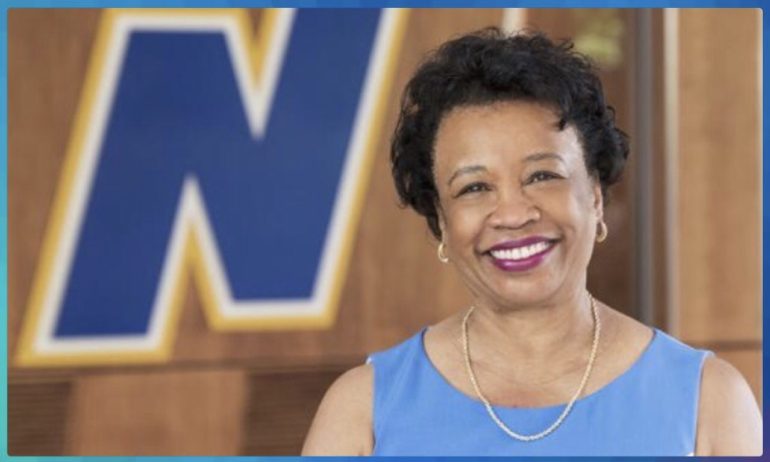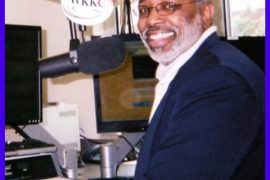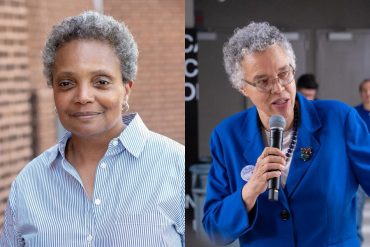Covid 19 has hit education hard. What are the effects of COVID-19 at Northeastern University?
The effects of COVID-19 were significant, but perhaps most importantly it has not stopped our students from advancing, succeeding and graduating. Almost overnight, virtually everything changed. Instruction moved to online or remote learning. All of our services moved online. Buildings closed. Our commencement celebration—my favorite event—was postponed. It was jarring, but the Northeastern Illinois University community tapped into its trademark grit and fought through to finish the Spring 2020 semester. Employees and alumni rallied to raise money for our Student Emergency Fund, which provided assistance to students to pay their bills after they lost their jobs, or their parents were laid off. It has been an incredible challenge, no doubt, but I am very proud of how Northeastern has responded and thrived. We are also appreciative for CARES Act funding that assisted our students and provided support for some of our faculty to engage in professional activities during the summer.
What do you think the long term effects of COVID-9 are on students?
This has been a traumatic event, particularly among hard-hit Black and Brown communities. COVID-19 underscored health disparities and economic inequity. Students have lost jobs. Some have lost family members. Many are learning how to learn online—a big departure from the traditional classroom experience. What I have seen among our students is resilience. They will not let this setback stop them from achieving their academic and career goals, and it is an honor to empower them. Long term, this crisis will reinforce for students what they are capable of accomplishing under duress. They will remember faculty and staff at Northeastern who helped them through this crisis. It also will further reveal to them the trend toward online and digital learning and business.
You have eased the standard requirements for college entry, by eliminating the ACT and SAT testing, will this be a permanent elimination?
Yes, that’s correct, though I would not characterize our adjustment as “easing” requirements. Rather, permanently eliminating the standardized test scores from consideration for admission to Northeastern evens the playing field. Standardized tests have a problematic history of serving as unnecessary barriers to entry for students of color, and Northeastern is committed to breaking these barriers. In addition, applicants with a 2.5 cumulative high school grade-point average will be guaranteed admission. While scores are not used to make admission decisions, they are not completely gone. Applicants are still encouraged to submit test scores in order to meet some scholarship and prerequisite requirements. At Northeastern, we continuously look for ways to give opportunity and access to a quality education for all students and to provide the services needed to help them succeed.
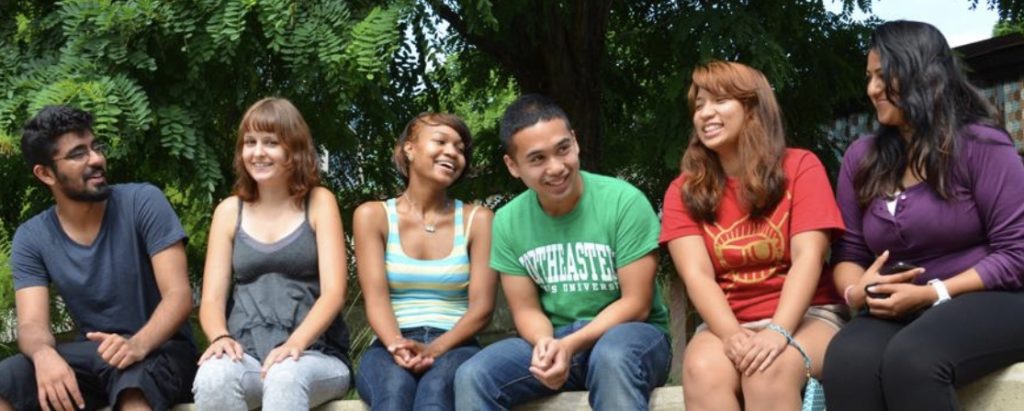
Where do you students come from, mostly?”
Northeastern is a comprehensive university with a College of Arts and Sciences, College of Business and Management, College of Education, and College of Graduate Studies and Research. Our students come from all over the world, but largely they come from Chicago and the surrounding suburbs. Students from near and far stay in our on-campus apartment building, The Nest. Our mission to serve these communities is reflected in our student demographics. We are a federally designated Hispanic Serving Institution and Minority Serving Institution. More than a third of our students are Latino and 10 percent are African American. Our faculty and staff are similarly diverse. In fact, The Chronicle of Higher Education ranks Northeastern second in the nation among four-year public institutions for diversity among managers.
What do you think in the learning process is the difference between face to face classroom learning and online learning? Is online learning as effective?
Both learning situations rely on a strong curriculum and sound educational practices. Instructors must know who their students are, what they know and what they don’t know, and how to provide learning activities and supports that help them be successful in the course. In the face-to-face environment, instructors deliver lessons according to a predetermined schedule. Students have the opportunity to ask questions and interact with others, and although the instructor plans for the classes, there is a great deal of learning that is unplanned because it arises from the particular comments and interactions that occur in the moment. Being in class with other students may provide social benefits that help motivate students, although with today’s technological advances, there are collaborative digital platforms that also support this interactive component. Online, the learning process differs primarily in the role of the instructor. You can’t simply put up videos, readings and assignments and expect students to learn. The instructor’s presence—as it is in a face-to-face class—is critical. Research suggests that students who come with weaker academic backgrounds may struggle in an online environment, but a lot depends on the instructor’s ability to engage the students. Setting up regular office hours, providing frequent feedback and encouragement are very important. Some lessons—such as science labs—remain difficult to teach and learn remotely, but today’s technology has advanced the learning experience in surprising ways that we might not have thought possible even a few years ago. So, whether online or face-to-face, teaching and learning must be student-centered with the realization that whatever learning platform, students learn differently. Our goal is always student success!
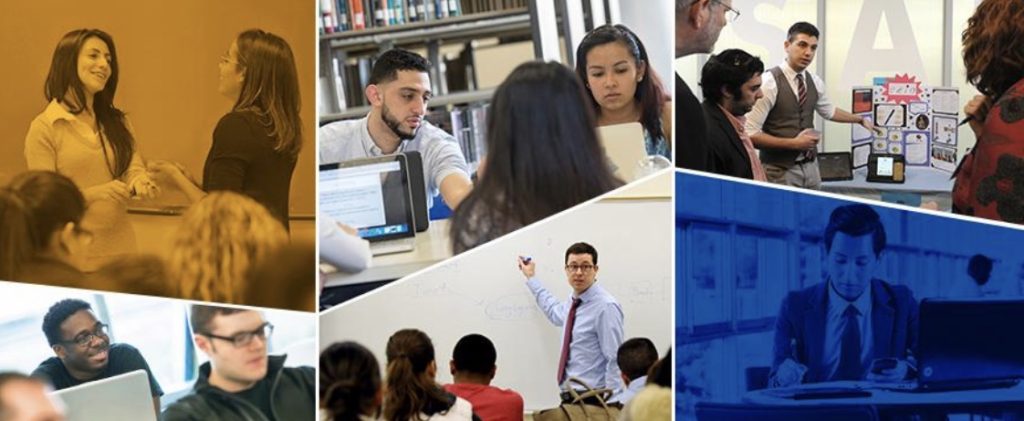
What do students loose in this COVID 19 era?
That’s an important question. We actually polled our students over the summer to ask this exact question, and their answer was that they miss the social aspect of Northeastern. We are a tightknit community, and the shift from hanging out in the student lounge to doing virtually everything from their homes was difficult. They missed their friends and classmates, and they missed having quiet spaces away from their families and roommates to study. We are working hard to address this with virtual events, and by providing safe, quiet spaces for work and study that adhere to the health guidance from federal, state and local authorities. I’m a people person, and I love interacting with our students, so I plan to protect that connection with more activity on social media. Like everyone, I’m really eager for the day when we can safely get back together for classes, concerts and commencement celebrations.
Name three people you like to most have dinner with? (Dead or alive)
At the top of my list would be my mother, Grace Gibson, who passed away a few years back. She was a remarkable woman who grew up in Alabama, migrated to East St. Louis, Illinois, and became my “shero.” Second would be one of my favorite writers, Toni Morrison. She was a brilliant woman, creative and knowledgeable. I heard her lecture several times, but to sit with her to discuss her life and her work would be priceless. Third, someone else I met briefly – Michelle Obama. When I met her, we only had a short time together, but she made me feel, though a brief conversation, like I was the only person in the whole wide world. She is a remarkable role model for us all for so many reasons, and Black women rock!!!

What do you like most about Chicago?
What I like most about Chicago is Northeastern Illinois University! Though serving as president is challenging, I know I am in the right place at the right time. Northeastern is dynamic, and it is diverse with dedicated students, faculty and staff. I take great pride in serving as the first African American woman president. I also like the food, concerts, outdoor spaces and so much opportunity for connecting with diverse communities.
You have eased the tuition for students at this time, how does that work?
Our tuition has not changed. That’s because we are still offering top-notch instruction, and students are still earning the credits that move them toward attaining a degree. In Spring 2020, we refunded portions of the student fees that paid for services students no longer could access or needed, like our gyms. For the Fall 2020 semester that begins Aug. 24, only about 12 percent of our classes will have a face-to-face component. Those are courses like Biology labs and music classes that are very difficult to do remotely. We have introduced a fee structure that ensures students who learn online or remotely—which is most of them—will pay a reduced amount.
Are the professors being retrained as they teach differently from classroom to online learning?
Absolutely! Many of our faculty members were familiar with the principles of teaching classes online, but certainly not all of them. Over the summer, we used federal CARES Act funding to heavily invest in training and preparing our instructors to teach in remote and online environments. This is absolutely critical as we adapt to best serve our students and prepare them for successful careers in Chicago and beyond. Our faculty have worked hard throughout the unexpected shift to remote learning this spring, and throughout the summer to make sure that they provide the same high-quality, student-centered education online as they would have face-to-face. Their dedication to our students is remarkable.


